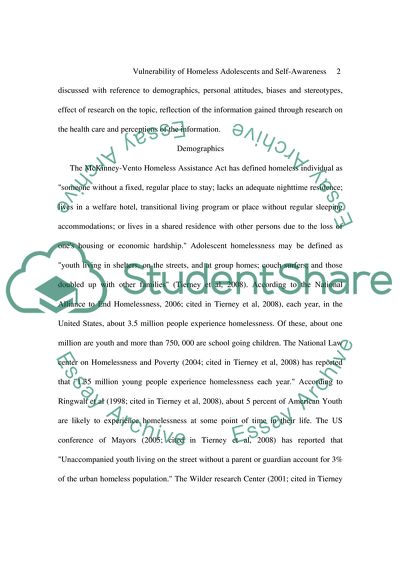Cite this document
(Issues of Vulnerability of Adolescent Homelessness Article Example | Topics and Well Written Essays - 1250 words - 1, n.d.)
Issues of Vulnerability of Adolescent Homelessness Article Example | Topics and Well Written Essays - 1250 words - 1. https://studentshare.org/sociology/1738976-vulnerable-population-and-self-awareness-paper
Issues of Vulnerability of Adolescent Homelessness Article Example | Topics and Well Written Essays - 1250 words - 1. https://studentshare.org/sociology/1738976-vulnerable-population-and-self-awareness-paper
(Issues of Vulnerability of Adolescent Homelessness Article Example | Topics and Well Written Essays - 1250 Words - 1)
Issues of Vulnerability of Adolescent Homelessness Article Example | Topics and Well Written Essays - 1250 Words - 1. https://studentshare.org/sociology/1738976-vulnerable-population-and-self-awareness-paper.
Issues of Vulnerability of Adolescent Homelessness Article Example | Topics and Well Written Essays - 1250 Words - 1. https://studentshare.org/sociology/1738976-vulnerable-population-and-self-awareness-paper.
“Issues of Vulnerability of Adolescent Homelessness Article Example | Topics and Well Written Essays - 1250 Words - 1”. https://studentshare.org/sociology/1738976-vulnerable-population-and-self-awareness-paper.


